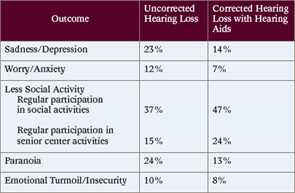Physician groups representing otolaryngologists have ambitious 2011 policy and legislative agendas that include pushing for replacement of the Medicare physician payment formula and helping to shape health reform’s implementation.

A Seller’s Market: How to prepare your practice for sale to a hospital
It’s 2011 and the pendulum is once again moving toward private practices selling to hospitals or affiliated foundations. Several years ago, the same phenomenon drove the medical market. Management companies and hospitals went on an acquisition frenzy, purchasing practices at breakneck speed. Soon, hospitals were dissatisfied, management companies went broke and physician practices went private again. Physicians simply proved to be less motivated and productive when employed by hospitals or affiliated with management companies.

Falling on Deaf Ears: Hearing loss in older adults may be an undertreated condition
Most people will experience some degree of hearing loss as they age. Statistics from the National Institute on Deafness and Other Communication Disorders at the National institutes of Health (NIH) indicate that 30 percent of adults ages 65 to 74, and 47 percent of adults 75 years or older, have hearing loss.

New Frontiers: Medical tourism brings potential for big business but poses big questions

Advertise with Caution: State laws restrict how physicians can market themselves
In this economy, investing in advertising as a way to increase profits is an attractive idea. But, before you reach out to a marketing firm, let me tell you about a recent scenario that happened to one of my physician clients.

A Coping Mechanism: Child life specialists can ease hospital stays for pediatric patients
Seven-year-old Michael is scheduled to have a hemangioma removed from his face at the Arkansas Children’s Hospital (ACH) Ambulatory Surgery Center in Little Rock. The morning of surgery, he and his mother meet with child life specialists Cassandra C. James, MS, CCLS, and Camille Dante, MS, CCLS, who show him pictures of the operating room. They let him play with an anesthesia mask and a pulse oximeter, and talk about what to expect when he goes to sleep.
Safety Net: With violence on the rise, otolaryngologists implement prevention strategies
The shooting of a doctor and two patients at Johns Hopkins Hospital in Baltimore in September sent a shudder of fear through all physicians, but for those who knew the late otolaryngologist John Kemink, MD, it was particularly saddening.
The Medical Home Gains Momentum: Could a team-based model work for otolaryngology?
The patient-centered medical home’s star appears to be rising. Thirty-eight states are testing this model of care in some way, according to the National Academy for State Health Policy. The federal health system reform law, passed this spring, includes several provisions encouraging the concept.
Response from the editor
Dr. Sims has eloquently identified the value of diversity not only in otolaryngology, but also its contribution to the strength of the U.S. as a nation. Drs. Kuppersmith and Thomas have responded to his editorial indicating steps that the AAO-HNS has taken and is currently taking to increase diversity.
Response from Dr. Sims
My Viewpoint was intended to call attention to a problem and inspire us to act with more alacrity.
- « Previous Page
- 1
- …
- 10
- 11
- 12
- 13
- 14
- …
- 27
- Next Page »